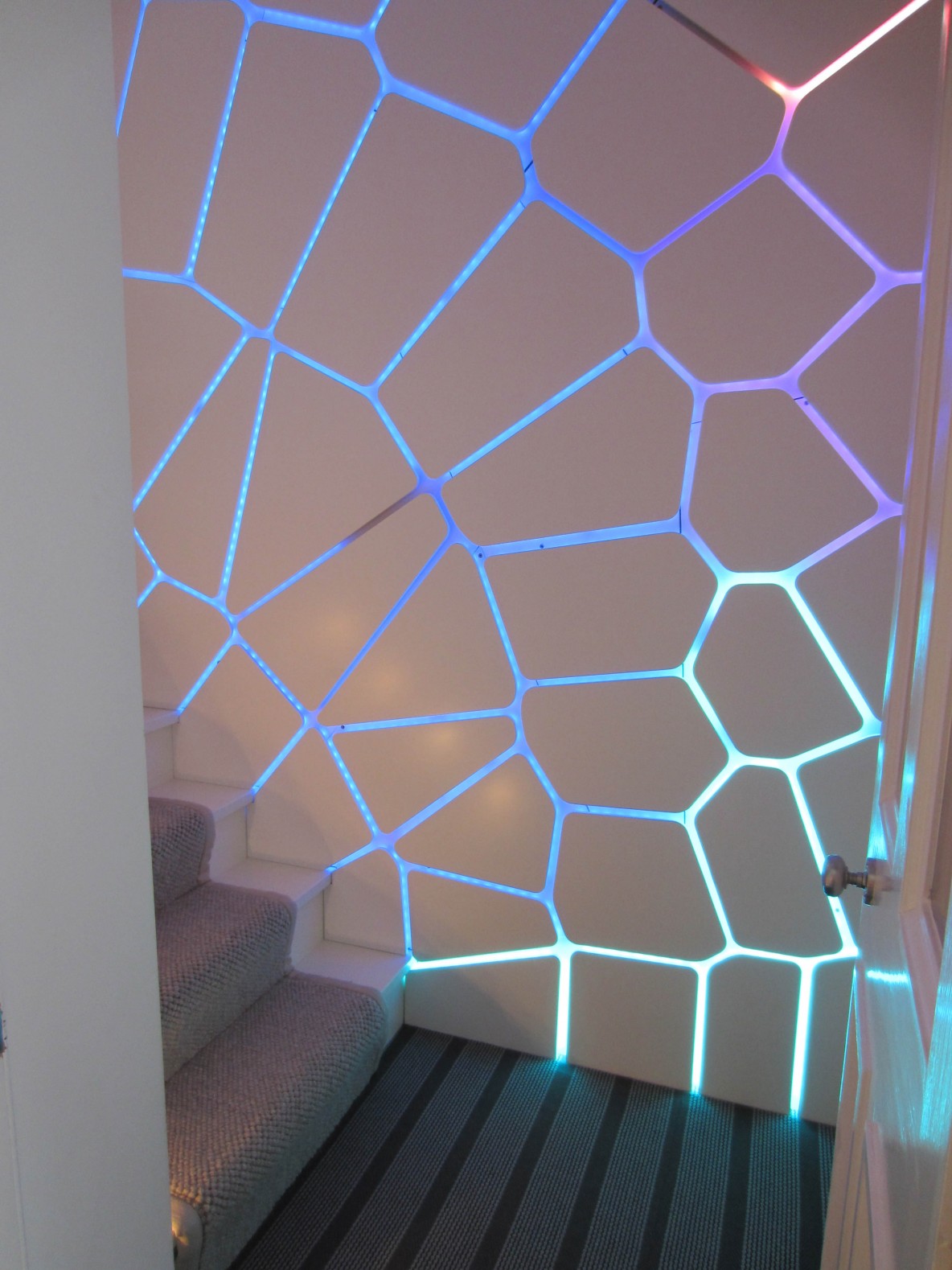Spidey Wall is the name for a physical wall lit up by multiple addressable LED strips. This program is an LPC1768 web server to control the wall from a browser.
Dependencies: EthernetInterfacePlusHostname RdWebServer mbed-rtos mbed
This project is part of a Light-Wall using addressable LED strips (WS2801). I have published a few posts on my blog about the construction of the wall and building a game to play on it (PacMan). I have also had a guest post from a friend who has set his children the task of producing some interesting animations. The original post is http://robdobson.com/2015/07/spidey-wall/ 
So far, however, I hadn't fully connected the physical (and electronic) wall with the web-browser creations to drive it. This project is hopefully the final link. A fast and reliable web server using REST commands to drive the 1686 LEDs in the Spidey Wall from code running in a browser (say on an iPad while you are playing a game).
The approach taken here results in the ability to control the RGB values of all 1686 LEDs at a rate of 20 frames per second.
A blog post describing the whole thing is here:
http://robdobson.com/2015/08/a-reliable-mbed-webserver/
colourconverters.cpp
- Committer:
- Bobty
- Date:
- 2015-09-03
- Revision:
- 6:8df79fe1afcd
- Parent:
- 0:887096209439
File content as of revision 6:8df79fe1afcd:
#include "colourconverters.h"
void HsvToRgb(HsvColor hsv, RgbColor& rgb)
{
unsigned char region, remainder, p, q, t;
if (hsv.s == 0)
{
rgb.r = hsv.v;
rgb.g = hsv.v;
rgb.b = hsv.v;
return;
}
region = hsv.h / 43;
remainder = (hsv.h - (region * 43)) * 6;
p = (hsv.v * (255 - hsv.s)) >> 8;
q = (hsv.v * (255 - ((hsv.s * remainder) >> 8))) >> 8;
t = (hsv.v * (255 - ((hsv.s * (255 - remainder)) >> 8))) >> 8;
switch (region)
{
case 0:
rgb.r = hsv.v; rgb.g = t; rgb.b = p;
break;
case 1:
rgb.r = q; rgb.g = hsv.v; rgb.b = p;
break;
case 2:
rgb.r = p; rgb.g = hsv.v; rgb.b = t;
break;
case 3:
rgb.r = p; rgb.g = q; rgb.b = hsv.v;
break;
case 4:
rgb.r = t; rgb.g = p; rgb.b = hsv.v;
break;
default:
rgb.r = hsv.v; rgb.g = p; rgb.b = q;
break;
}
}
void RgbToHsv(RgbColor rgb, HsvColor& hsv)
{
unsigned char rgbMin, rgbMax;
rgbMin = rgb.r < rgb.g ? (rgb.r < rgb.b ? rgb.r : rgb.b) : (rgb.g < rgb.b ? rgb.g : rgb.b);
rgbMax = rgb.r > rgb.g ? (rgb.r > rgb.b ? rgb.r : rgb.b) : (rgb.g > rgb.b ? rgb.g : rgb.b);
hsv.v = rgbMax;
if (hsv.v == 0)
{
hsv.h = 0;
hsv.s = 0;
return;
}
hsv.s = 255 * long(rgbMax - rgbMin) / hsv.v;
if (hsv.s == 0)
{
hsv.h = 0;
return;
}
if (rgbMax == rgb.r)
hsv.h = 0 + 43 * (rgb.g - rgb.b) / (rgbMax - rgbMin);
else if (rgbMax == rgb.g)
hsv.h = 85 + 43 * (rgb.b - rgb.r) / (rgbMax - rgbMin);
else
hsv.h = 171 + 43 * (rgb.r - rgb.g) / (rgbMax - rgbMin);
}